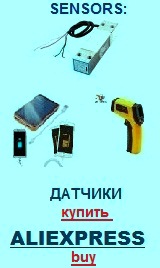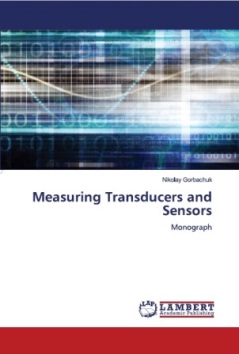Pyrometers
Pyrometers are devices that use electromagnetic radiation to determine their body temperature.
Surface of all bodies of substances whose temperature above absolute zero emit electromagnetic waves. And the nature of this radiation and characteristics depend on the temperature. The range of thermal radiation is in the range 0.1 - 1000 microns.
In addition to the radiation of the body also absorb radiation from other bodies. In general, the body absorbs some of the energy, part reflects an often overlooked on. All this is characterized by the corresponding coefficients. In physics, there is the concept of the thermal radiation of a black body. A black body is a body which absorbs all radiation incident on it. On such a body and is considered the absorption and emission of bodies.
In practice, none of the body does not absorb or radiate as a black. Model of a black body can be hole camera, the internal surface of which has a good absorptive capacity and the same temperature.
The emission spectrum of a black body and its temperature dependence is:
Transducers, gauges, sensors - Information portal © 2011 - 2025 Use of material is possible by placing an active link

русский / english
Home >> Temperature, thermoelectricity >> Pyrometers. Optical, Radiation pyrometers
• Information about various converters and sensors of physical quantities, parameters of various physical processes is presented.
• Electrophysical properties and effects in various electrical materials.
• Theory, experimental results, practical application
The wavelength of maximum emission intensity is determined by law Wines:
λm = b/T
b - constant Wines, T - absolute temperature
Knowing the laws of radiation emitted by the surface temperature can be determined by measuring the flux of radiation incident on a surface.
The following radiation detectors:
A) black and gray boxes (thermal). These receivers are temperature sensors (thermistors, thermocouples) mounted on blackened receiving radiation records. Their sensitivity is independent of wavelength.
B) selective sensors. This photo cells, photoresistors, photodiodes, phototransistors. The absolute sensitivity of selective sensors is much higher.
Radiation detectors cause the appropriate signal processing circuitry change current, resistance and voltage.
At high temperatures, the radiating surface (above 650 ° C) receiver
radiation can serve as the eyes of the observer.
Distinguish pyrometers:
Optical - sensitive to radiation in a certain frequency band.
Radiation - sensitive to all frequencies.
Optical pyrometers. Optical pyrometers are sensitive only to a narrow range of waves. This is achieved by using a special filter.
Dimension of the object is analyzed and the radiation detector, or by comparison with a source control measure. The most widely used pyrometers with disappearing filament bulbs. When dealing with such pyrometers researcher compares a narrow range of wavelengths of the visible spectrum of the measured radiation and brightness control (incandescent tungsten filament). Upon reaching the equality of the two filament brightness disappears. Heating power (current) of the filament is a measure of optical temperature controlled facility. Temperature is determined from a calibration curve, or at the instrument can be already applied scale.
Brightness (spectral, optical) temperature measured by the pyrometer is true, if the spectral emissivity of the surface of the test object is equal to one (black body). In practice, the measured temperature is always less than the true and need to be compensated for the measured value, which is determined according to the actual temperature and the spectral emissivity (determined from tables) (eg, for λ = 0.65 nm at 1200 porcelain 0.78 ° C, iron 0.35 at 800 ° C).
Disappearing filament pyrometers with a very convenient and easy pyrometers. The disadvantage is the restriction on the lower limit of the temperature, as well as some subjectivity of measurement results. At the same time, the correction introduced in the measurement with no black emitting objects rather than for radiation pyrometers.
Have also been developed with the objective optical pyrometers radiation detector - photovoltaic cells, etc.
Measuring pyrometer with disappearing filament made from a distance of 2 m to infinity. The distance could be adjusted by using special optics. The lower limit of the temperature of 650 ° C or 200 ° C for the objective receiver. The upper limit is usually not more than 2500 °С. Pyrometers are calibrated on a black radiator or bulb with a tungsten filament.
Infrared radiation (total radiation). This pyrometers which perceive light in the whole spectral range. Such is considered to be, if at least 90% of the radiation of the object used in the pyrometer. For these pyrometers receiver can be used practically only thermal detectors - thermocouples, thermistors. These pyrometers can measure temperatures in the range -50 ° C - 2000 ° C and above. Adjustment of the coefficient of radiation in many pyrometers are automatically and immediately thermometer shows the actual temperature, if known in advance to set the emissivity value.

See also:
CONVERTERS, GAUGES, SENSORS
Information, news, advertising


